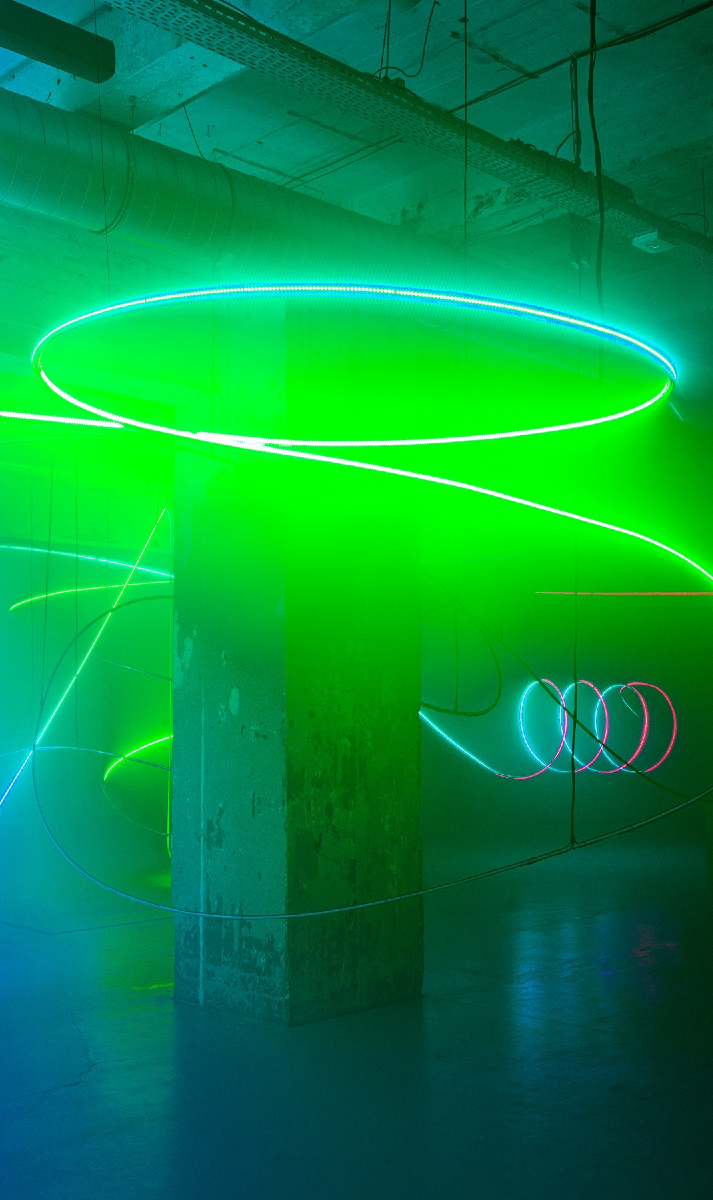


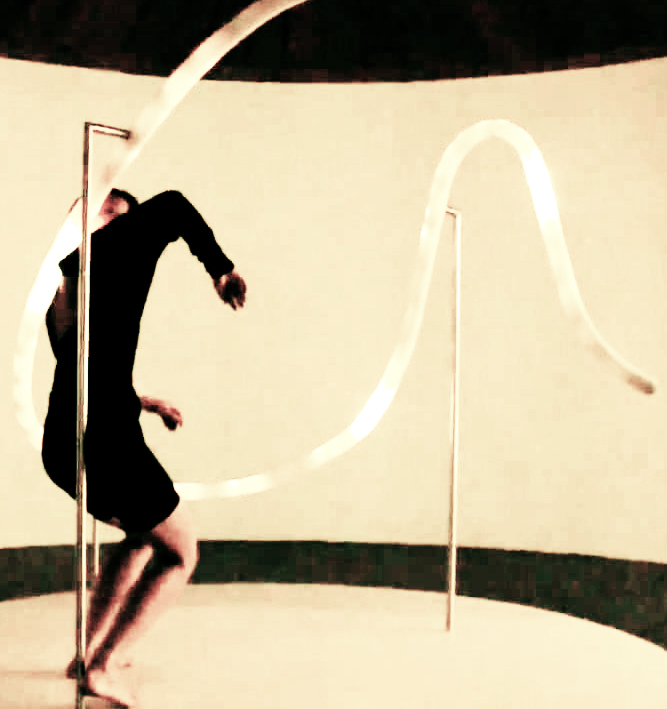

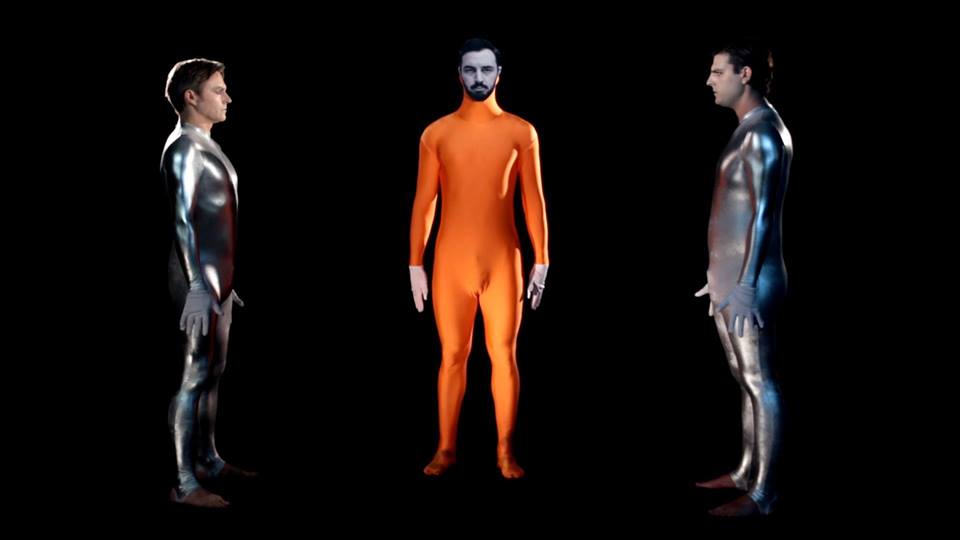

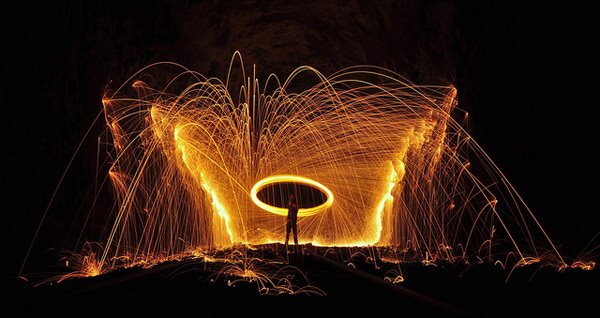
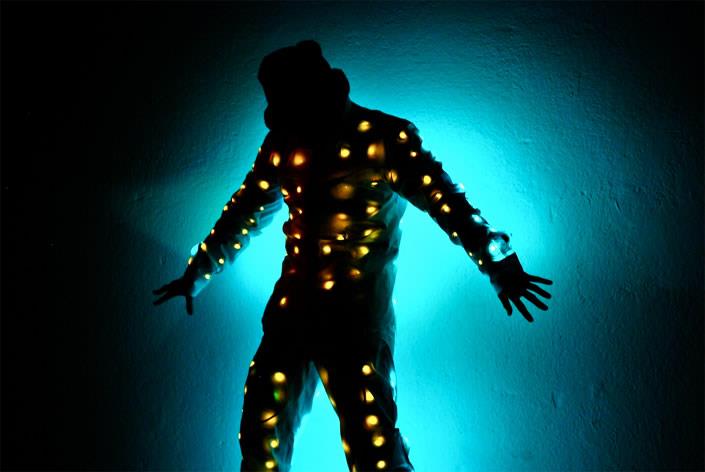


ACT LIGHTING DESIGN
solstis act

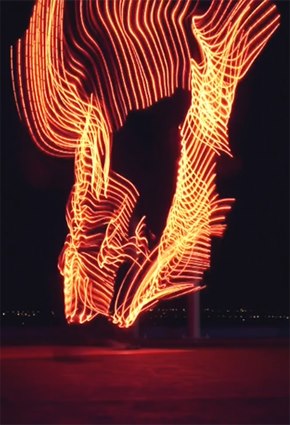



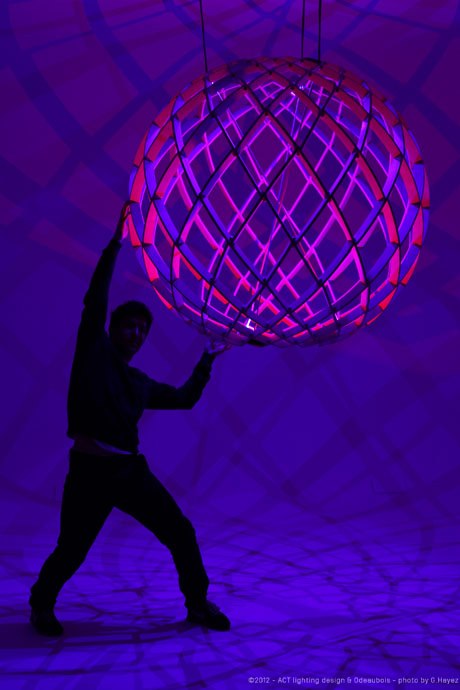
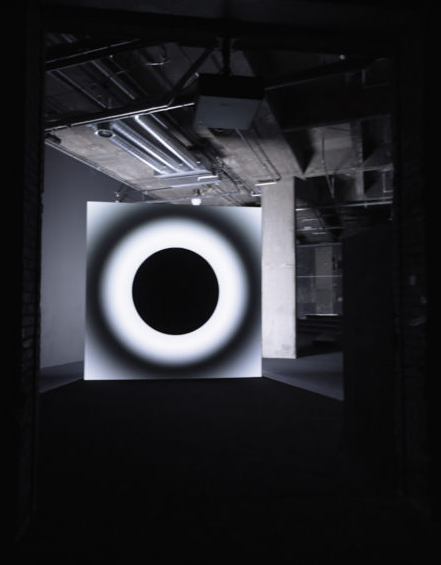
Ryoji Ikeda
point of no return
With point of no return, Ryoji Ikeda condenses the unknowable chaos of the event horizon of a black hole into a work of order and balance. Composing a delicate assemblage of basic shapes, sounds, light and shadow, the artist eschews the intricacies of data for a more sculptural approach. While gesturing towards the sublime, the infinite expanse of space and the immense, reality-warping gravitational force of a black hole, he focuses in on the beauty of the physical, bringing together a few simple elements to make sense of something unthinkably complex. Through his own artistic process of playing with space, the artist finds purity in basic structures while drawing inspiration from the vast scope of the universal. “point of no return is a very simple, very intense piece,” he says.

ENESS
Modern Guru
Modern Guru is a translucent ovoid with four huge digital eyes, floating above a ceremonial ring of LEDs. From his mouth flows a ream of absurdist messages, and in a statement about the true nature of lived experience, a new message is delivered when visitors take a photo of Modern Guru – a missive produced only for those who seek to photograph life rather than live the moment. This immersive new media art installation uses the intersection of art and technology to explore modern paths to happiness through unique interactions with characters along a mystical journey of discovery. Visitors are asked to commit to the path – a tight and winding trail with subtle points of connection along the way – a glowing landscape of oversized, whimsical mountains that chant incantations and blink innocently from digital eyes.
Having communed with the Guru, visitors then weave their way back through this warped and strange world full of illusions and delusions, perceptions and deceptions, all the while bathing in luminescent light; embracing big, gentle forms; and following their own path up the pink tongue staircase to meet the one who oversees the whole fantastic dominion, the Sun God.
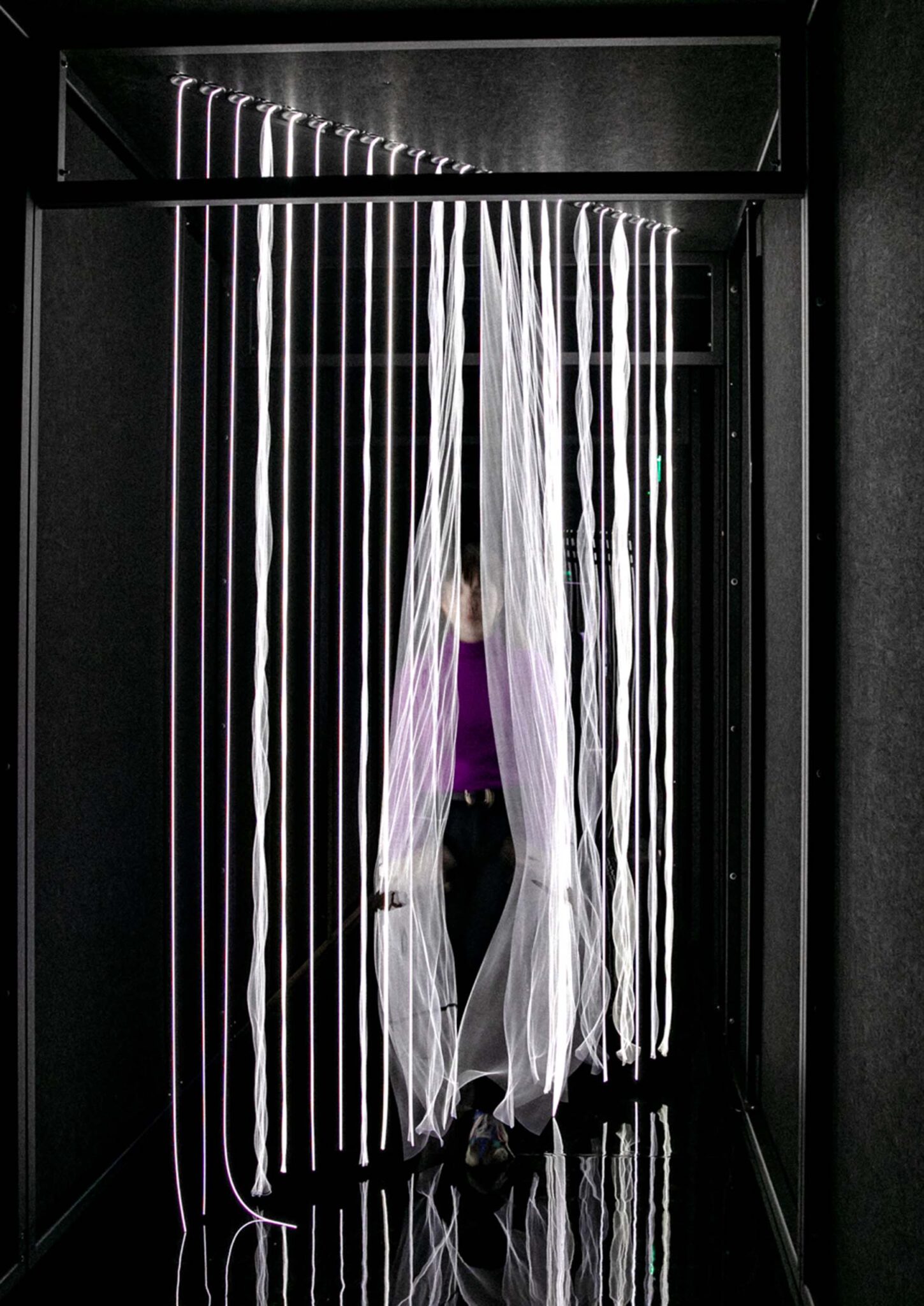
QUBIT AI: Marc Vilanova
Shell of
FILE 2024 | Installations
International Electronic Language Festival
Marc Vilanova – Cascade – Spain
Waterfalls are a continuous source of infrasonic frequency found in nature. Although inaudible to humans, they play a crucial role in ecosystems, especially for migratory birds who use them as a compass. However, many waterfalls have lost their frequencies due to climate change. The work creates an immersive experience in which the audience interacts with the visualization of sound waves, experiencing the vibration of sound through illuminated strings.
Bio
Marc Vilanova is a sound and visual artist who works at the intersection of art, science and nature. Vilanova’s artistic production has always been led by a spirit of innovation fueled by an interest in new media. His practice combines sound/light installations, performance, and sculpture.
Credits
This work was partially carried out within the scope of the EMAP program at gnration, with the support of the Creative Europe Culture Programme, the Avatar Center in Quebec City and the Ramon Llull Institute.
Photo:
Eloise Coomber
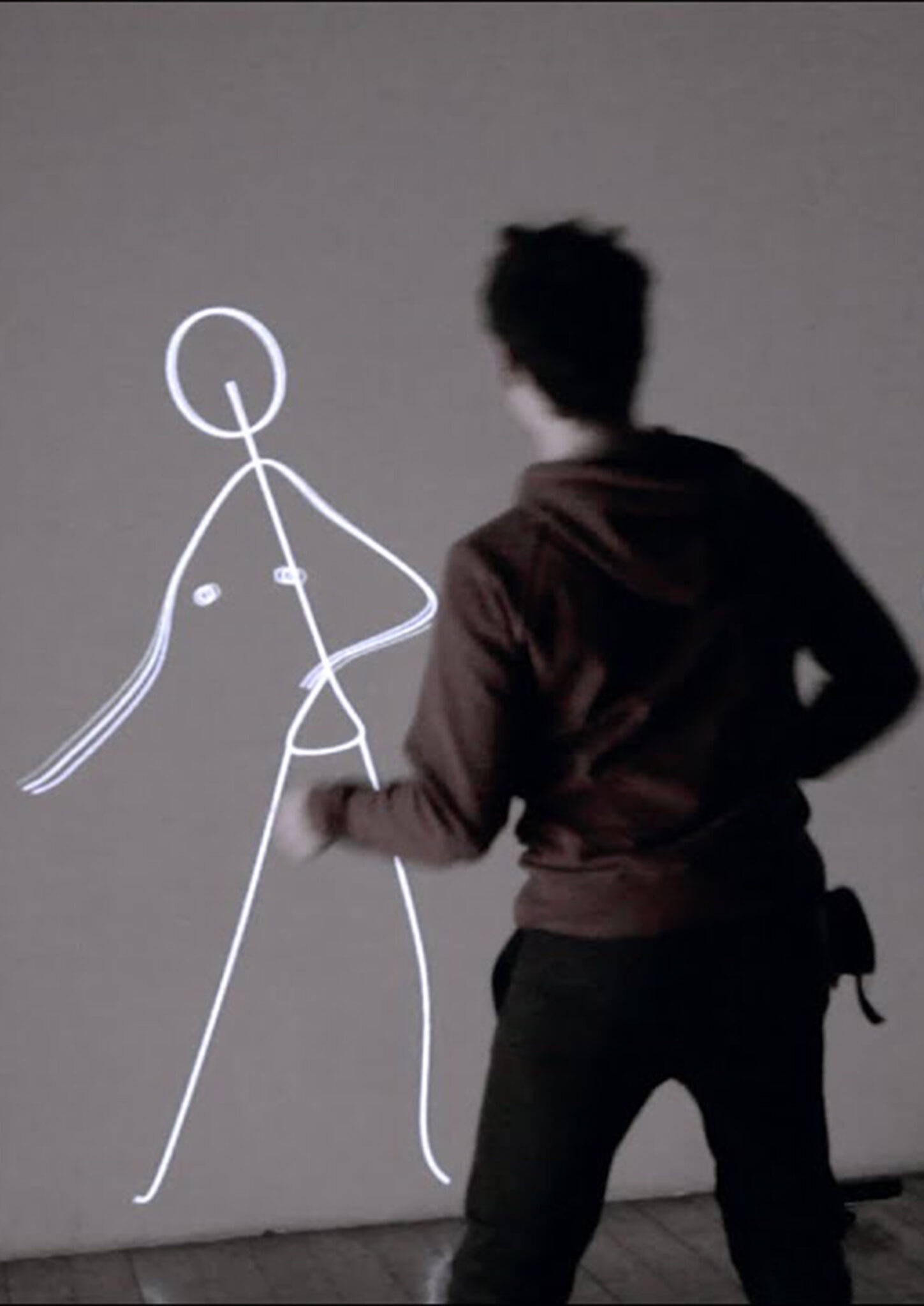
QUBIT AI: Klaus Obermaier, Stefano D’Alessio & Martina Menegon
EGO
FILE 2024 | Installations
International Electronic Language Festival
The mirror stage in psychology explains how the Ego forms through objectification, where one’s visual appearance comes into conflict with emotional experience, a concept called ‘alienation‘ by psychoanalyst Jacques Lacan. The interactive installation EGO reenacts and reverses this process by distorting the mirror image based on the user’s movements, highlighting the tension between the real and the symbolic, the Ego and the It, subject and object.
Bio
Klaus Obermaier is an interdisciplinary artist, director and composer who creates innovative works in the performing arts, music and installations using new media. Stefano D’Alessio researches social issues induced by the internet and explores how the web and its derivatives influence human behavior and the body. Martina Menegon creates intricate assemblages of physical and virtual elements, exploring the contemporary self and its hybrid corporeality.
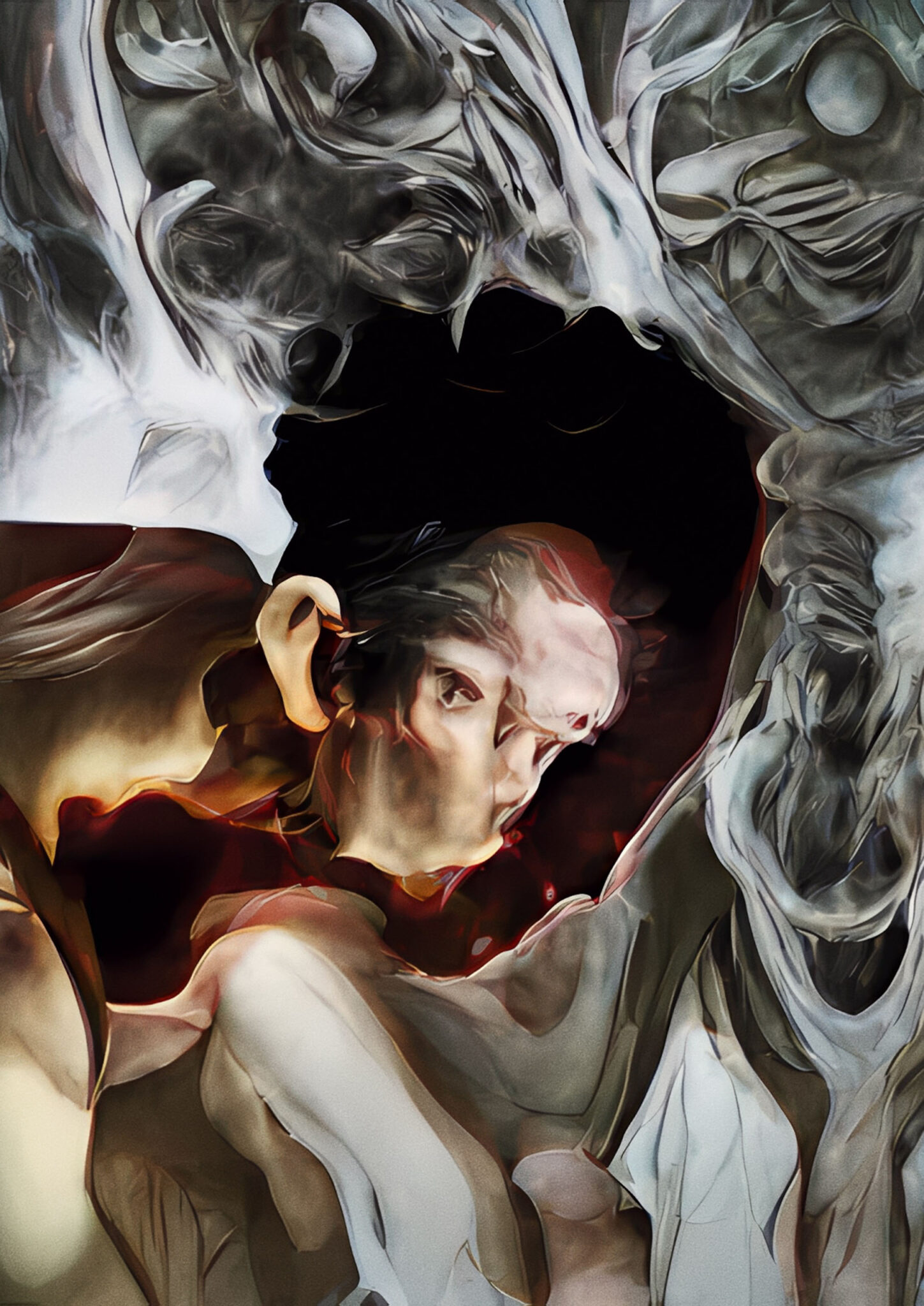
QUBIT AI: Robert Seidel
HYSTERESIS
FILE 2024 | Aesthetic Synthetics
International Electronic Language Festival
Robert Seidel – HYSTERESIS – Germany
HYSTERESIS intimately weaves a transformative fabric between Robert Seidel’s projections of abstract drawings and queer performer Tsuki’s vigorous choreography. Using machine learning to mediate these delayed re-presentations, the film intentionally corrupts AI strategies to reveal a frenetic, delicate and extravagant visual language that portrays hysteria and hysteresis in this historical moment.
Bio
Robert Seidel is interested in exploring abstract beauty through cinematic techniques and insights from science and technology. His projections, installations and award-winning experimental films have been presented at numerous international festivals, art venues and museums, highlighting his innovative approach to visual art.
Credits
Film: Robert Seidel
Music: Oval
Performer: Tsuki
Graphics: Bureau Now
5.1 Mixing: David Kamp
Support: Miriam Eichner, Carolin Israel, Falk Müller, Paul Seidel
Financing: German Federal Film Board

QUBIT AI: Gabriela Barreto Lemos
Quantum Photography
FILE 2024 | Quantico
International Electronic Language Festival
Gabriela Barreto Lemos – Quantum Photography – Brazil
Quantum photography technique that allows you to record images without light passing through the object.
Typically, a beam of light interacts with an object; In this same beam, the image of that object is formed, which is recorded on a camera, on paper or directly into the eye. This research used two quantumly entangled photon beams. An infrared photon was directed at a silicon wafer engraved with the image of a cat. The other photon, red, was sent on a different trajectory, did not pass through the silicon plate and was detected by an EMCCD (electron-multiplying charge-coupled device – a photographic camera with sensitivity to very low intensity light). The image of the cat engraving was recorded by the camera, which only detected the red light, which did not touch the engraving. It is the first time that an image has been captured in a beam of light that has not interacted with the object that produced the image.
The experiment, led by researcher Gabriela Barreto Lemos, was carried out at the Institut für Quantenoptik und Quanteninformation in Vienna, 2014.
The technique has potential for applications in indirect image capture, from medicine to quantum computing.
Bio
Professor at the Federal University of Rio de Janeiro, in Brazil, whose research focus is on quantum optics, with an emphasis on quantum foundations, quantum images and quantum information. Additionally, she is involved in interdisciplinary creative projects and promoting inclusion and diversity in science.
Credits
Gabriela Barreto Lemos
Vienna Center for Quantum Science and Technology
Institut für Quantenoptik und Quanteninformation
Group of Anton Zeilinger

Yunchul Kim
La Poussière de soleils (Dust of Suns)
In the semicircular conservatory is a tall standing sculpture. It’s called La Poussière de Soleils, the Dust of Suns. On its back are tubes full of murky amber fluid; sunlight that has yet to be illuminated, still yet to set fire. Its façade comprises three hexagonal panels filled with a magical alchemical solution of la poussière de soleils, of the artist’s own invention. Each appears filled with thick golden sunshine. The bubbles blown through them leave trails of light even brighter and more golden; like trails of light torn through the heavens, like pools of shooting stars.

Aqua Creations
Manta Ray Light
Aqua Creations creates hand crafted lighting design. Each piece is designed in their studio, on a made to order basis by their team of artisans who have been working for 30 years. Through spellbinding designs combined with master craftsmanship and innovative technology, light fuses with function and becomes art.

Leo Villareal
Bloom Nebula
Incorporating LEDs, electronics, and custom code, this sequenced light sculpture exemplifies Villareal’s latest inquiries into natural and synthetic systems.

MARC FORNES & THEVERYMANY
The Orb
The Orb is a nimble architecture of experience and light. Against the grand staging of the new Charleston East building—an architecture of lightness in its own right—this pavilion performs as a complementary structure: one developed from the computational protocols and spirit of play that guide the work that happens on the premises. This system of many parts in ultra-thin aluminum will perform as an icon and a point of engagement for both Google employees and the Mountain View public.

Robert Henke
Phosphor
Focused rays of ultraviolet light paint temporary landscapes on a layer of phosphorous dust on the museum floor. Operating on concepts of erosion and mutation, the installation changes its behaviour and visual appearance during the exhibition period. Each trace of light leaves a mark on a virtual mountain range, like water slowly washing out deep canyons. With a little help from alchemy and quantum physics, matter acquired a memory: translating time into space

VTOL
ADAD
This installation is a mechanism that serves as a kind of interface between planetary processes and an audience. It consists of 12 transparent piezocrystals, grown especially for the project, and 12 motorized hammers that strike them. The installation is connected to the internet. Its core algorithm is controlled by data from a meteorological site which shows lightning strikes in real time (on average, 10~200 lightning flashes occur on the planet every minute). Each time the installation receives information about a lightning strike, a hammer strikes one of the crystals, resulting in a small electrical discharge produced by the crystal under mechanical stress. Each of these charges activates a powerful lamp and sound effects.

Craig Green
Spring/Summer 21
The spring 2021 collection reflects that mentality, and highlights the more commercial offerings of the brand, which are normally buried underneath his over-the-top runway styling. Carryover styles — such as quilted jackets, padded vests, parkas, shirts and hoodies with cutout hole and lace trim details — are available in pine green, beige, raisin purple, and midnight blue, and take center stage in the look book. Even Green’s signature frame-like constructions around the body have been toned down. Instead of using experimental and colorful materials, Green has hung deconstructed parts of a shirt or a jacket on metal frames. The effect is of two people interacting in one sculpture.

Elisabeth Chojnacka
Henryk Górecki
Concerto for Harpsichord and String Orchestra Op. 40
Harpsichord: elisabeth chojnacka
Less than nine minutes long, the bipartite Concerto for Harpsichord (or Piano) and String Orchestra, which the composer sometimes called a “prank”, is a veritable volcano that carries the listener away from the very first bars with its immense energy. Its repetitive, motoric nature and rhythmic vigour suit the specific, slightly clattery sound of the harpsichord which is usually somewhat amplified, complemented by the chordal texture of the strings. In both parts, the mood of the piece clearly draws on the highlander music of the southern Podhale region, of which Górecki was a great admirer. In the context of his monumental sacred music from the same period, this Concerto is like the artist’s brief “respite”. It reflects the whirl and “profane” energy of a folk dance.
Elżbieta Chojnacka, to whom the piece was dedicated, has always stressed that every performance of the Concerto, which she has played throughout the world, ends with an encore. The piece meets with such acclaim from the audience, and is one of the most striking – and most joyful – compositions in the composer’s output. “A spectacular plaything”, as Teresa Malecka has described the piece.

FILE LED SHOW Neuroscientific-Installation
saccade
OUCHHH STUDIO
Neuroscientific-Installation
We are invited to São Paulo for our vertical light and sound installation which will transform the facade of São Paulo’s one of the most important architecture which is Fiesp Led Building.
We started this project with the idea that Neuroscience and simultaneous movement of both eyes between two or more phases of fixation in the same direction algorithms, and we transform the high-resolution led screen into a media canvas which transformed into living architecture.

Olafur Eliasson
DET LYTTENDE SPEJL
Visitors to DNV-Gødstrup, a new hospital near Herning, Denmark, are greeted at the main entrance by an airy, round pavilion. Two curved pipes, crossing one another perpendicularly, hold a large disc aloft at a slight angle. The reflective underside of the disc mirrors the semicircular pipes, creating the illusion of two complete circles passing through the ceiling and rising into an imaginary space above. As visitors enter the pavilion, they can gaze up at their own reflections in the mirror and see themselves incorporated, upside down, into the artwork, embraced within the globe drawn by the pipes. The tilt of the ceiling allows the reflections to be seen from the outside. As the viewer moves towards and around the pavilion, the rings appear to shift in shape, changing from ellipses to circles and back again.
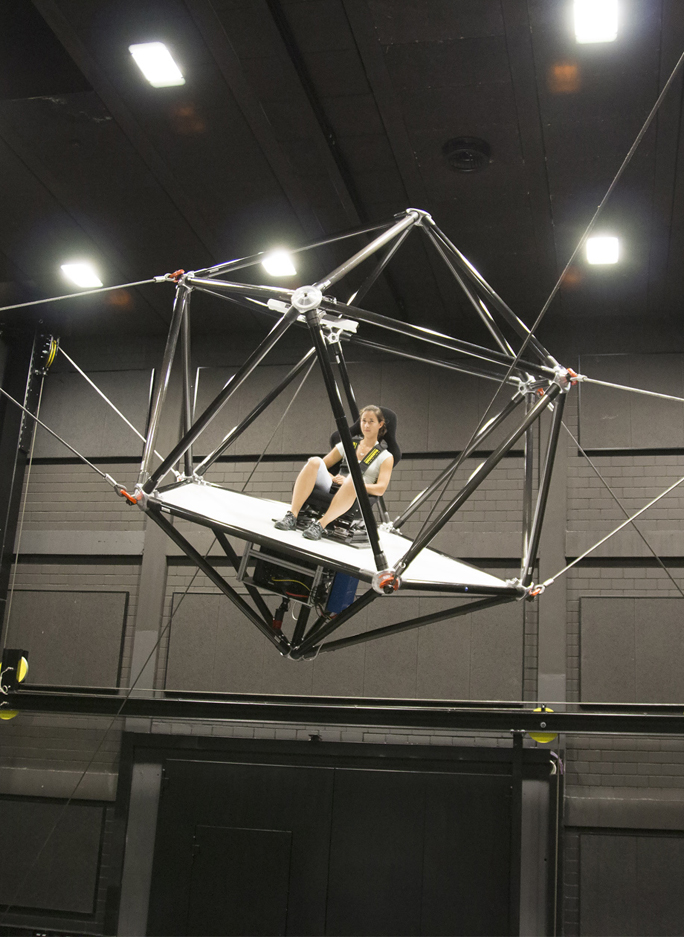
Heinrich Bulthoff
Cable Robot Simulator
Max-Planck-Institut für biologische Kybernetik
Eight steel cables, each with 1.4 tons of tensions, hold aloft a caged platform with a seat for one person. Using a wireless VR headset, that person can simulate experiences like flight while being zoomed in dozens of different ways. Eight retracting cables connected to a winch pull on the cage. It’s like a giant, flying VR jungle gym.

DORETTE STURM
FILE SAO PAULO 2017
THE BREATHING CLOUD
“The Breathing Cloud” is a monumental floating organism. The work transforms a space by its motion, light, and rhythmic breathing. With this light art the phrase “let a room come to life” gets a new meaning. The clouds skin looks fragile and soft, and the movements are rhythmic, yet random, so the whole room feels like a living being. The technology is designed so that the strong LED modules and the mechanism support the pervasive breathing. It gets physically bigger and smaller and embraces with its bright light space.

DAN CORSON
Empyrean Passage
Empyrean Passage is reminiscent of both a theoretical black hole and portal into the celestial worlds. Empyrean (notice the pyre in the word) is the final and fiery level of heaven as depicted by Dante- or aether in Aristotle’s cosmology. The form is constructed like a giant hoopskirt and gracefully moves in the wind creating a gossamer lighting effect overhead. While this project is an oculus to the heavens, more focus is usually paid to more terrestrial stars in this neighborhood.The interior of the spiral is designed with aqua and black dashes. The dashed interior creates optical effects with the eyes and at certain times of the day shifts your perception of the sky’s color.This project utilizes extremely “green” electroluminescent lighting. The entire sculpture consumes less electricity than a household nightlight and operates on a photo cell. Special thanks to the City of West Hollywood, Andrew Campbell, Maria Lusia de Herrera, Greg Coons, Glen Bundrick / Luminous Film.

Frederik Heyman
CEREMONIAL FORMALITY
Frederik Heyman’s work is a balancing act incorporating multiple media – including video, installations and photogaphy – often in a digitally altered environment. In his work, Heyman explores memory and duration, using photogrammetry and 3D scanning to depict and represent the passage of time. The hallmarks of Heyman’s work are mechanical and technological: wires, wheels, scrolling LED marquees, metal frames, clamps, industrial lights, screens and cameras. Bodies–as opposed to humans–are subject to unusual dynamics with these technological trappings. In Ceremonial Formality (2020) a contortionist is encased in a metal cage while a spectator, hooked up to wires, looks on.

MARTIN HESSELMEIER & ANDREAS MUXEL
CAPACITIVE BODY
file festival
The installation “capacitive body” is a modular light system that reacts to the sound of its environment. Each custom-built module consists of an electro-luminescent light wire linked to a piezoelectric sensor and a microcontroller. Through its modular setup it can easily be adapted to various urban spaces. The sensors are used to measure vibrations of architectural solids in a range of low frequencies. These oscillations are triggered by surrounding ambient noise, for example traffic noise. The data sensor controls the light wires, which are tensed to a spatial net structure. According to the values of the measurement, light flashes are generated. With increasing vibrations the time between flashes becomes shorter and shorter. The stability of this nervous system gets to an end where it collapses and restarts again. A dynamic light space is thereby created, which creates a visual feedback of the aural activity around the installation.

Ryoji Ikeda
micro | macro
micro | macro transforms Hall E in the MuseumsQuartier into an oversized world of moving images and sounds. In his immersive installation, multimedia artist Ryoji Ikeda creates a field of imagination between quantum physics, empirical experimentation and human perception. In collaboration with nuclear scientists at CERN, Ikeda has translated complex physical theories into a sensory experience. The Planck scale is used by scientists to denote extremely small lengths or time intervals. Concepts like space and time lose their meaning beyond this scale, and contemporary physics has to rely on speculative theories. And on art. Visitors to micro | macro enter a world of data, particles, light and sound that makes the extremes of the universe perceptible to the eye and ear. In the micro world we penetrate the smallest dimensions of the unrepresentable, while in the macro world we take off into cosmic expanses that allow us to experience the infinite space beyond the observable universe. In this maelstrom of data, an acoustic and visual firework bridges the gap between theoretical understanding and sensual perception.
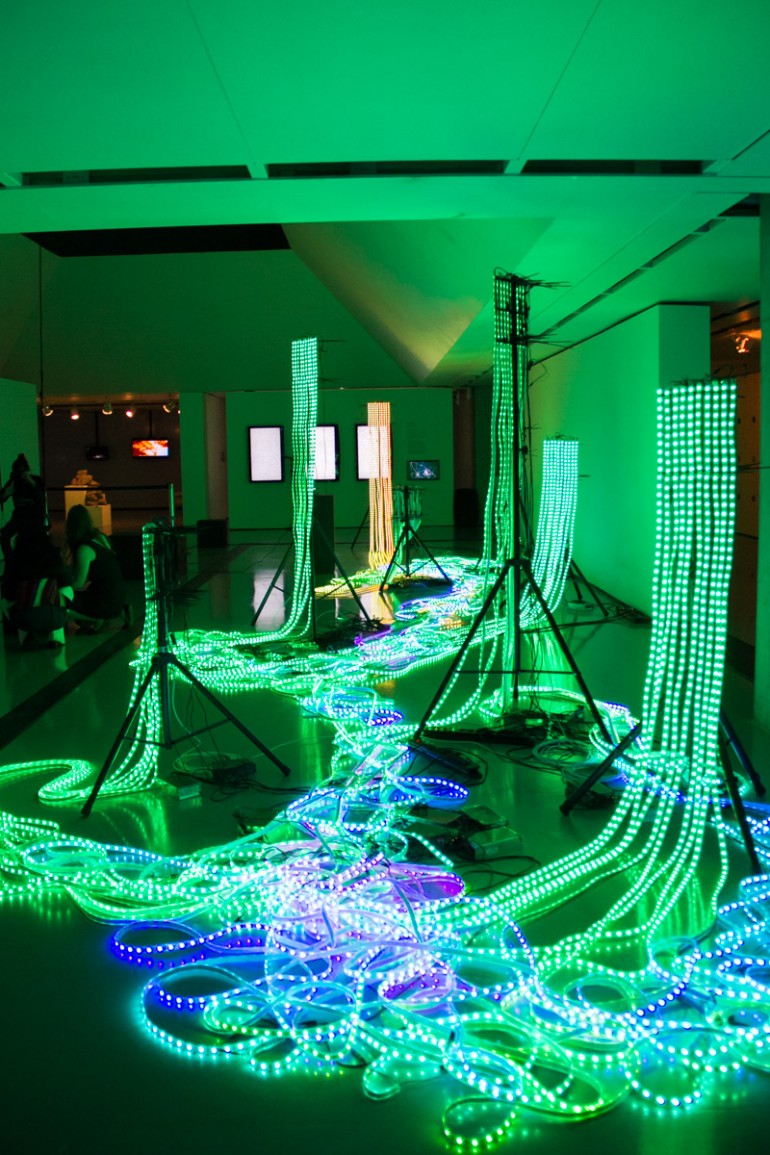
POLYMORF: Marcel Van Brakel & Frederik Duerinck
Hardwired
FILE FESTIVAL
“Hardwired” consists of around 18,000 LED-lights that symbolize the transfer of knowledge. Individual luminous pixels connect and then disappear. In a process of constant transformation, new patterns, interrelations and complexities emerge.
.

Hiroshi Matoba
Sun and Moon Room
Sun and Moon Room in the Art Museum of Nature and Human Non-Homogeneity, located in Bungotakada City, Oita, houses one of the interactive art installations designed to extend one’s physicality in contact with the nature. The concept of this work is a room where visitors can play with sunlight. As visitors walk through the room, small apertures on the ceiling automatically open and close, following their movements. The aperture system is designed to envelop the visitors’ bodies in light and to change the shape of the light cast at their feet, mimicking the waxing and waning of the moon. Visitors’ movements are detected by sensors, which trigger to open only the apertures located in the direction of the sun. The room is controlled to create an interior condition that represents the weather of the moment using a program for analyzing live data released by the Japan Meteorological Agency.

Caitlin Franzmann
Drawn Together, Held Apart
Caitlin is an artist that is interested in intentional social connection in public spaces. She creates experiences that allow participants to quietly communicate and listen to one another. In the live component of her installation, Caitlin hosts an conversation entitled ‘talking and listening about talking and listening’. ‘Drawn Together, Held Apart’ (2017), a custom made table with inbuilt surface transducer speaker, motion sensor activated LED lighting, proximity speakers and audio. Visitors rest their ears on the glass and listen.

Wayne McGregor
Atomos
Atomos grows out of the smallest unit of matter. Bodies, movement, film, sound and light are atomised into miniature shards of intense sensation.Ten incredible dancers perform the unique style of Wayne McGregor – sculptural, rigorous, jarring and hauntingly beautiful. McGregor is accompanied by a team of sensational artists including longtime collaborators lighting designer Lucy Carter and filmmaker Ravi Deepres, and neo-classical ambient composers A Winged Victory For The Sullen.

COD.ACT
Coro pêndulo
Pendulum Choir é uma peça coral original para 9 vozes A Cappella e 18 macacos hidráulicos. O coro é constituindo por um corpo vivo e sonoro. Esse corpo se expressa por meio de vários estados físicos. Sua plasticidade varia de acordo com sua sonoridade. Varia entre sons abstratos, sons repetitivos e sons líricos ou narrativos. Os corpos dos cantores e suas vozes brincam com e contra a gravidade. Eles se tocam e se evitam, criando polifonias vocais sutis. Ou, apoiados por sons eletrônicos, rompem sua coesão e explodem em um voo lírico ou se dobram em um ritual obsessivo e sombrio. O órgão viaja da vida à morte em uma alegoria robótica onde a complexidade tecnológica e o lirismo dos corpos em movimento se combinam em uma obra com acentos prometéicos.
.
Pendulum Choir is an original choral piece for 9 A Cappella voices and 18 hydraulic jacks. The choir is constituted by a living and sonorous body. This body expresses itself through various physical states. Its plasticity varies according to its sound. It varies between abstract sounds, repetitive sounds and lyrical or narrative sounds. The singers’ bodies and their voices play with and against gravity. They touch and avoid each other, creating subtle vocal polyphonies. Or, supported by electronic sounds, they break their cohesion and explode in a lyrical flight or bend in an obsessive and dark ritual. The organ travels from life to death in a robotic allegory where technological complexity and the lyricism of moving bodies combine in a work with Promethean accents.

Doug Aitken
The Garden
The Garden is a living artwork that embraces the dichotomy between the natural environment and a synthetic man-made experience. Aitken’s The Garden installation brings the viewer into the center of the artwork and asks them to physically immerse, participate and become the subject of the installation. Set inside a dark warehouse space the viewer walks inside, their eyes adjusting to become aware of thick lush jungle growing under artificial grow lights. Walking closer, the viewer enters inside the jungle and discovers a huge rectangular glass cube. Inside the glass room is a man-made environment replete with generic elements of modern life: tables and chairs, a cabinet, a sterile tableau set under bright raking lights.

Studio Smack
Tribe City
Hundreds of beings and dreamlike and dystopian elements inhabit the digital and autonomous works that are part of this project. “It’s a portrait of the masses,” summarise the artists, whose fascination with group dynamics, technological phenomena and the ego are expressed in Tribe with an eclectic selection of individuals who bring to life deeply recognisable social attitudes. Collective behaviour and manipulation are recurring themes in SMACK’s work, which often uses popular visual references and light-hearted aesthetics to present us with an uncomfortable reflection of who we are.

UVA UNITED VISUAL ARTISTS
Present Shock
Present Shock confronts the viewer with a barrage of statistical clocks representing real-time information about the world—from life-changing global events to the banal trivia of everyday existence—highlighting how the speed and volume of data in the Information Age present new challenges to our limited cognitive apparatus. Many of the statistics presented occur at timescales and spatial horizons that similarly defy our perception or comprehension. Disturbing the inertia of the here and now, they reveal the fluctuating state of dynamic transformation that characterizes life on earth.

Jennifer Townley
Inverta
A circular axle is able to rotate by the use of 36 universal joints hanging from perspex rods and transmitting their rotary motion onto the next. In between the joints, 36 stainless steel objects are attached that rotate at the same speed as the axle. One of the objects has a slightly thinner body, making room for two integrated timing pulleys and thin cogged belts that connect it with the drive mechanism situated on the upper circular frame. The objects are made from thin sheet material and are carefully balanced by placing several counterweights inside their hollow bodies and by perforating their tails, reducing the amount of material furthest away from the axle. During the entire revolution their centre of gravity perfectly aligns with the position of the axle so that a stable rotation is ensured.

MASAKI FUJIHATA
beyond pages
The data projector loads images of a leather bound tome onto a tablet which a light pen activates, animating the objects named in it – stone, apple, door, light, writing. The soundscore immaculately emulates the motion of each against paper, save for the syllabic glyphs of Japanese script, for which a voice pronounces the selected syllable. Stone and apple roll and drag across the page, light illuminates a paper-shaded desklamp; door opens a video door in front of where you read, a naked infant romping, lifesize and laughing, in.

Lebbeus Woods
The Light Pavilion
The Light Pavilion by Lebbeus Woods in collaboration with Christoph a. Kumpusch, in the Raffles City complex in Chengdu, China, by Steven Holl Architects.
.
The Light Pavilion is designed to be an experimental space, one that gives us the opportunity to experience a type of space we haven’t experienced before. Whether it will be a pleasant or unpleasant experience; exciting or dull; uplifting or frightening; inspiring or depressing; worthwhile or a waste of time, it is not determined by the fulfillment of our familiar expectations, never having encountered such a space before. We shall simply have to go into the space and pass through it. That is the most crucial aspect of its experimental nature, and we – its transient inhabitants – are experimentalists.Lebbeus Woods and Christoph a. Kumpusch

Brodbeck & de Barbuat
Les 1000 vies d’Isis
Les 1000 vies d’Isis (The 1000 lives of Isis) highlights the birth of an imaginary character created entirely by computer. A virtual identity whose daily life is imagined in images. The fictitious staging of these moments photographed in the South of France interrogates Photography and Portraiture by introducing a questioning on the nature of images, their link to reality and to the identity of the living.

